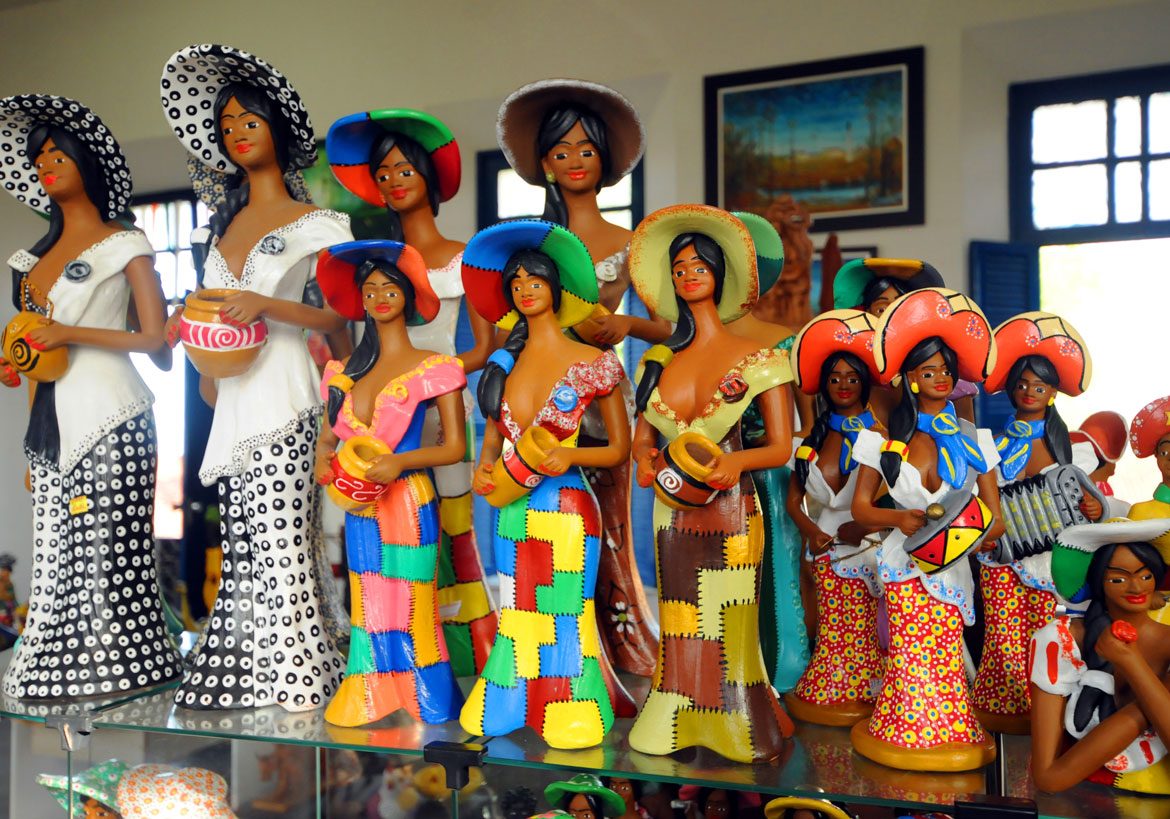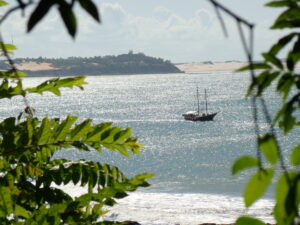Culture

The Culture of Rio Grande do Norte, Brazil: A Mix of Tradition, Diversity, and Nature
Introduction
Located in the Northeast of Brazil, Rio Grande do Norte is one of those states of the country, which fascinates not only with its beautiful beaches, dunes, and warm weather but also with its enormous cultural heritage. The culture herein stems from the indigenous, African, and Portuguese influences, creating a unique state blend of traditions, customs, and festivities. Be it festivals, folklore, traditional food, or music, Rio Grande do Norte is a cultural treasure that begs further discovery.
The Rich Historical Roots of Rio Grande do Norte
History has deeply carved into the current cultural landscape of Rio Grande do Norte. Before the arrival of the Portuguese in the 16th century, the region was filled with indigenous groups such as the people of Potiguara. The Potiguaras left an indelible mark on local languages, traditions, and even place names.
To this came the influence of the Europeans, soon to be joined by the cultural contributions of enslaved Africans. The three original cultural roots—indigenous, African, and Portuguese—combined in a rich tapestry of contemporary culture within the state. Centuries passed by, and Rio Grande do Norte gradually evolved an identity somewhat different from the rest of Brazil.
Festivals and Folklore
Rio Grande do Norte hosts festivals that form the heart of its culture; basically, they are reflections of the joy and vibrancy of its people. The most outstanding ones are those with religious connotations, their origins having emanated from Catholic traditions introduced during the colonial period.
Carnaval de Natal
Carnaval is indeed celebrated throughout Brazil, but in Natal, which is the state capital of Rio Grande do Norte, it has its flavor. Joyful time with samba schools, street parties, and colored parades. The festive spirit comes alive-the city is filled with rhythm, dance, and carnival costumes. Though much smaller than Carnaval in Rio de Janeiro or Salvador, this is also a profoundly loved event among residents and tourists.
Festa de São João
This is one of the most important festivals in the state, representing Saint John the Baptist during the month of June. Some characteristics that mark this festival are traditional forró music, far-reaching colored outfits, and quadrilha. Bonfires, fireworks, and delicious foods such as pamonha and canjica, representing corn pudding and sweet corn dessert respectively, are at the center of the celebration. The town of Mossoró is mostly famous for its São João Feast, which lures visitors from every corner of the country.
Festa do Boi
It is among the annual agricultural fairs and festivals in Parnamirim. This occasion showcases agricultural traditions of Rio Grande do Norte, specifically cattle raising, which, from a historical perspective, has been so important for the economy of the state. Along with that, it is time to enjoy rodeos, auctions, and exhibitions. More than that, music and food are a part of rural culture, besides tying the present to the agricultural past of the region.
Folia de Reis
This event, which happens every January, is to commemorate the Three Wise Men of the Bible. Groups of musicians in bright attire processions go around towns singing traditional songs, acting out the coming of the Star of the East to pay a visit to Baby Jesus. It is partly religious devotion and partly local folklore.
How are the Music and Dance of Rio Grande do Norte ?
It is also worth noting that music and dance are closely intertwined in the culture in Rio Grande do Norte. Every style represents a blend of African, indigenous, and European influences. Some of the most famous styles are listed below:
Forró
Probably the most symbolic music of this region, forró is a kind of lively accordion-driven dance music that reaches its peak of popularity during the festivals of São João. It takes the form of rhythm that invites people to dance in pairs. Legendary Brazilian musicians like Luiz Gonzaga popularized forró throughout the country, and the genre still remains one of the main features of the cultural celebration of Rio Grande do Norte.
Xaxado
This is a typical folk dance of Northeastern Brazil’s hinterlands associated with the cangaço, the bandits or rebels of the first decades of the 20th century, who wandered around dry Northeast regions. It is a dance performed in groups, which is very fast; participants work with rhythmic stomping to give the percussion.
Samba de Coco: This is another regional dance in which the name comes from the use of coconut shells for keeping the rhythm. Of African origin, highly rhythmic, accented, and syncopated, this dance maintains bouncy footwork. Often, participants will sing call-and-response-style songs while dancing, making it an interactive and celebratory atmosphere.
Maracatu
This is one of the Afro-Brazilian performance genres that are not as frequent within the state of Rio Grande do Norte but rather representative of a broader northeastern culture. This particular percussion, dance, and theatrical presentations of the Portuguese court make sure to pay homage to the African forefathers who also helped create the cultural history of the region.
Rio Grande do Norte Offers a Very Unique Traditional Food
Besides the historic places, the food in Rio Grande do Norte is another important aspect that reflects geographical diversity, ranging from the coast to the interior.
Seafood
Seafood plays a major role in the coastal area, mainly that around Natal. Dishes with shrimp, crab, lobster, and fish are included in the top category of local dishes. One of the main seafood dishes is peixada potiguar: a hearty fish stew, usually served with vegetables and rice.
Carne de Sol
The backlands are known for carne de sol, whose translation is sun-dried meat. Cassava, more commonly called macaxeira, and pirão-a type of gravy done with manioc flour-is how this salted meat is consumed. It’s one of the traditional foods since it comes from farm labor.
Tapioca
This dish, so widespread and made with tapioca starch, is an everyday snack in Rio Grande do Norte. The ingredients used for filling, either savory or sweet, include cheese, grated coconut, and condensed milk.
Cuscuz Nordestino
Steamed cornmeal is enjoyed throughout the Northeast. For this reason, it is served both at breakfast and dinner, with eggs, butter, or carne de sol.
The Beauty of Handicrafts and Artisanship
Rio Grande do Norte is a state with a rich variety of traditions in handicraft, which comes from skilled artisans throughout the state. Their common materials include clay, wood, leather, and straw. Items include :
Ceramics
An important craftsmanship practiced by local artisans, these include pieces for household uses such as pots, bowls, and flower vases. São Gonçalo do Amarante is also quite famous for its figurines in clay and ceramic sculptures, the themes generally being religious and folkloric.
Lace Work
The city of Mossoró is also well-renowned in every part of the state because it contains lacework. It is a very traditional process that was passed down through generation to generation by women, who created these intricate and delicate patterns to make tablecloths, clothes, and decorative pieces to further produce them.
Products of Carnauba Palm
Baskets, hats, and mats are some items made from its leaves found in abundance among the countryside. The carnauba palm is a great natural asset in the state, not only for handicrafts but also due to its wax.
Key Takeaways of Rio Grande do Norte’s Culture
The culture of Rio Grande do Norte displays its dynamic mixture of history with music, dance, food, and art passed down from its diverse origins. Everything is here: from the rhythmical beats of forró to colored São João festivals. The state will offer a full package of Brazilian culture with tradition as exuberant as its people. Its folklore, traditional foods, and artistic expressions reveal a culture by Rio Grande do Norte’s resistant and creative inhabitants and through it into the northeastern identity of Brazil.
It gives a dimension of the cultural richness of Rio Grande do Norte and points to the differential contribution this state makes to the national heritage of Brazil.



